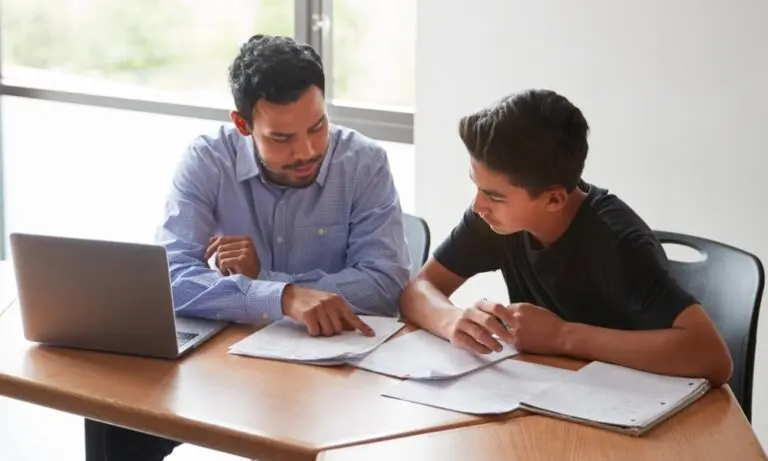
How to Know If You May Be Overwhelming Your Students

In Singapore, home tutoring is quite popular for a reason. Students receive the one-on-one attention they would not receive in classes, which is only one of the many reasons. This would allow their home tutor to provide them with more individualized instruction. Lessons could occasionally be too much for the student, though, because they would also receive additional attention from their home tutor.
New tutors frequently make this error, which may also go unnoticed for a while. Tutors might be more involved and exert greater pressure on their students because they receive all the attention from their home tutor. When we put too much pressure or information on our pupils, it affects their learning experiences.
They may not only have learned nothing new during the tuition sessions, but they may also have had a negative learning experience that will influence their future attitudes toward learning. This will become an even more serious issue. Keep in mind that a tutor should be a powerful motivator in addition to giving your children the tools and encouragement they need to succeed academically.
What are some signs you may be overwhelming your student?
Table of Contents
We mentioned that this can go unnoticeable but you can watch out for these signs to make sure you are not overwhelming your students and how to overcome situations such as.

1. Too many facts
We frequently overwhelm pupils by teaching them too much factual information that requires comprehension and memorization. Sharing too much information in a short amount of time can send our pupils into a mental tailspin since facts are unchangeable.
Students are like empty cups that need to be filled with water; if you fill them up too much, they will spill over. Water will be wasted in this way. Students will experience the same thing. All of the information you give them will be too much for them to process. As a result, our students become mentally exhausted, which hinders their ability to retain the lessons we teach.
Instead, try to go through the lesson’s most important ideas first. Constructing ideas in an inverted triangle can help you with this. You can put the most important ideas on top and then go down to the least. This way if your student can still take in more information, you can continue with it without missing the bigger and more important information first.
You can also write notes or provide a summary of important ideas so that your students can review them after the lesson. Even better, you may assist them in writing their own notes, which will ensure that they are customized to their understanding and that nothing is overlooked because you will also support and guide them. This significantly lowers tension and makes them feel less overwhelmed by giving them the space and time to absorb and comprehend the information presented.
2. Too many topics under too little time
When we cover too many topics, we also put too much strain on our kids. A lesson that covers a lot of material in a short amount of time might cause whiplash, much like giving them too much knowledge. In other cases, they might even mix up one topic with another. This is particularly true when we practice answering multiple-choice questions or when we use practice sheets. If you continuously change topics, especially if they are unrelated, your pupil may get confused.
Lesson flow is crucial for this reason. Students can better connect the following lesson to what they have already learned if the transitions between them are seamless. You can do this by assigning all of the questions from the same subject to your students in a single lesson, and then conducting a recap once they have finished.
In this manner, you won’t have to cover as many subjects, and your learner will also receive a quick review. However, if you want them to practice answering multiple-choice questions in preparation for an exam, make sure they review their subject matter first. Following your marking of the paper, go through the incorrect answers topic by topic.
Selecting subjects that complement or relate to one another will also help in this, making the transition smoother. Before going on to the next one, ask the student to share their opinions about the subject, what they have learned, and any questions they may have.
3. No recaps
As previously said, when it comes to teaching, recaps are crucial. Lessons will occasionally be connected to one another or have some sort of connection to the one before it. Lessons can occasionally be completely distinct, yet they may still make use of previously taught skills. It won’t, however, ensure that your student will retain all of the material. We risk confusing our students if we go immediately into the lesson and cause them to forget or become less familiar with the subject.
Give them an overview before your lesson to help them remember it. Just go over the key points from the last lesson once more. As previously said, you may also assign students to complete the lesson recap in order to improve their communication abilities. The best time to do this is immediately after the session or if the class is brief. Another option is to summarize yourself and then ask your student to add their ideas or memories. It’s also an excellent opportunity to discuss revisions with them and answer any queries they may have.

4. Lacking breaks between lessons
During lessons, breaks are essential because they provide your students an opportunity to relax and take a quick rest. Furthermore, it gives them time to absorb the information, which improves their memory. If we don’t give students enough breaks throughout class, they might not learn as well and efficiently.
It also makes kids less attentive and lowers learning productivity because their brains are constantly processing information. Therefore, remember to include student breaks in your lesson plans. Every 20 or 30 minutes, kids should take a break to stretch, go for a stroll, or perhaps have a snack. They will therefore feel more focused and energized when they return to the session.
Conclusion
Excessive information overload, abrupt topic changes, an absence of recaps, or inadequate breaks can all have a negative effect on students’ learning experiences and attitudes toward learning. Tutors can establish a more encouraging and stimulating learning atmosphere by concentrating on key concepts, pacing classes appropriately, and including recaps and breaks. By facilitating a more comfortable speed of information processing, these techniques improve understanding and memory. To ensure that students feel inspired and secure in their academic endeavors, tutors should endeavor to strike a balance between patience and attentiveness.

Carelle
Carelle is a teacher who has been through the ups and downs of the teacher and learner life. She wishes for every learner to gain educational satisfaction that will help embody the people they want to be in the future.




